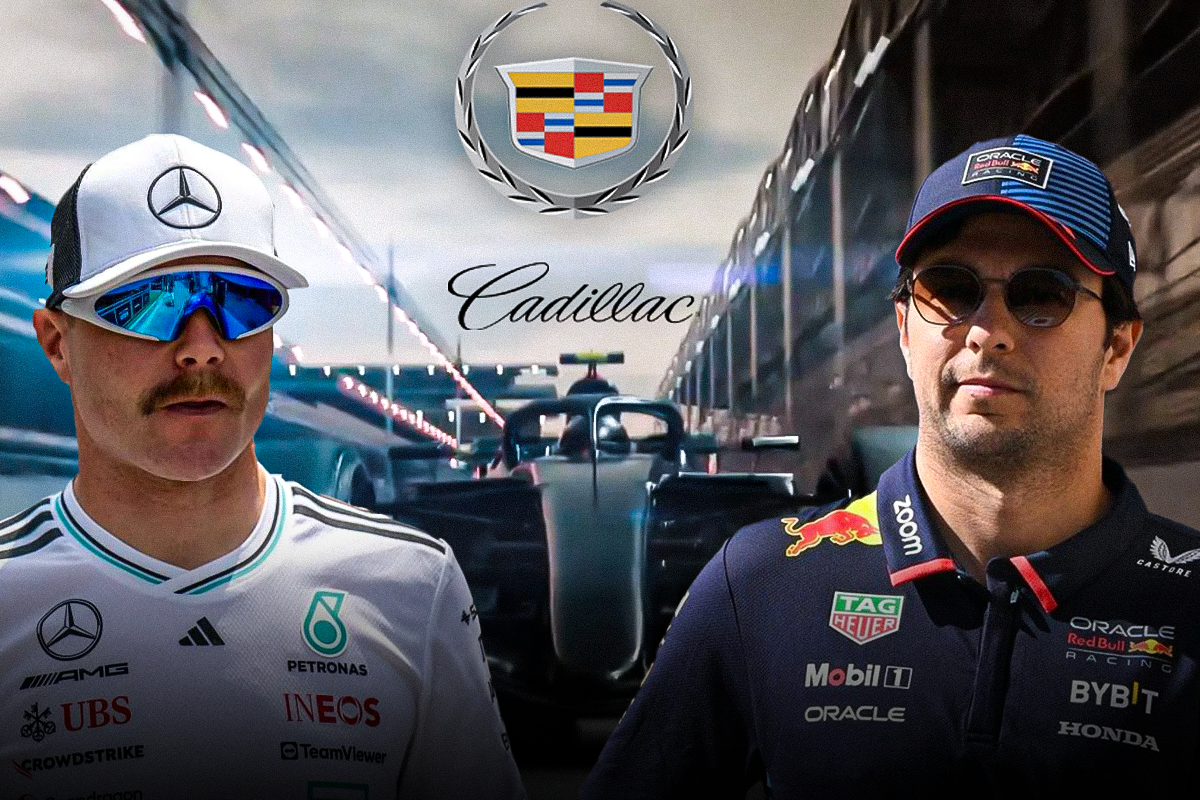

For the first time since 2016, Formula 1 is adding a new team, and it’s a Cadillac. Backed by General Motors and TWG Global, the luxury marque will join the grid in 2026. Beyond the headlines, Cadillac’s arrival isn’t just another expansion slot. It signals why the future of F1 belongs to factory giants, not private challengers.
Watch What’s Trending Now!
Drivers Sergio Pérez and Valtteri Bottas are locked in, with Colton Herta ready as test driver. Meanwhile, Operations will be split between Indiana, Charlotte, and Silverstone, led by TWG Motorsports, where American engineering meets world-class expertise. For American fans, this isn’t just a team launch; it’s a dream decades in the making, finally coming true. The journey was long, full of hurdles, but the passion for Formula 1 in the U.S. never died.
Attempts to plant an American flag in Formula 1 aren’t new, but most have ended badly. In 2010, US F1 collapsed before it ever reached the grid, short on cash and infrastructure, and was fined €309,000 ($414,600) before being banned from FIA competition. Haas followed in 2016, running Ferrari engines and a Dallara chassis, but found life against F1’s giants to be a steep climb. Then came Michael Andretti’s Cadillac bid in January 2023. The FIA approved, but Formula One Management balked—citing thin infrastructure and shaky backing. Passion and pedigree impressed, but the bar for entry had only grown higher.
ADVERTISEMENT
Then, in March 2025, a fully backed proposal emerged. GM and TWG Global joined forces. Michael Andretti stepped back from daily operations, while Mario remained on the board as a guiding presence. Cadillac F1 was born. Strapped in and ready to roar, TWG Global, led by Mark Walter, is running operations across three continents. But let’s be real, getting here required a pile of cash only a handful could flash.
The price of entry
Joining the grid isn’t just about speed; it’s about cash. Under F1’s Concorde Agreement, the ten existing teams split billions in revenue, and any newcomer threatens to dilute that pie. The solution: a $450 million anti-dilution fee (double the cost set just a few years ago). GM paid it, writing the kind of check only an automaker can. That single number explains why private entrants like Andretti struggled where Cadillac succeeded.
ADVERTISEMENT
In 2024, Liberty Media, the owner of FOM, reported total revenue of $3.65 billion for Formula 1. Approximately 45% of this revenue, equating to about $1.64 billion, was distributed among the ten teams. This distribution is based on their performance in the Constructors’ Championship, with additional bonuses for long-standing teams like Ferrari.
ADVERTISEMENT
OEMs bring what private teams simply can’t
GM’s entry as a power unit manufacturer by 2029 is a game-changer. Private teams? They can hope, hustle, and dream, but they can’t compete with the industrial firepower, money, and engineering depth an OEM like GM brings.
Top Stories
Cam Newton Reveals Exactly Why 32 NFL Teams Blacklisted Him as Panthers Legend Announces Retirement Status

Colin Kaepernick’s Wife Questions NFL Logic After Colts Sign 44-Year-Old QB Philip Rivers Over Kap

Marcus Freeman Had Already Made Decision on Notre Dame Joining New Conference, Before AD’s Warning

Who is Sherrone Moore’s Wife, Kelli Moore? Here’s Everything About Michigan Wolverines’ HC’s Partner

Kansas City Reporter Erupts Against Travis Kelce for Choosing $100 Million Podcast Over Chiefs

Aryna Sabalenka Breaks Silence on Nationality Switch After Belarus Representation Ban

GM is investing $150 million in a new engine facility near Charlotte, called GM Performance Power Units LLC, which will be staffed with 300-350 top engineers and technicians ready to build hybrid F1 engines from the ground up. This operation brings decades of high-performance racing experience from IMSA and Corvette right into F1. That’s a major edge; private teams typically depend on customer engines and smaller crews, putting them at a clear disadvantage. But the real impact goes beyond the garage.
Cadillac F1 is also set to boost fan interest, sponsorship, and media attention, especially in North America. This move is far from random because GM is following a proven OEM playbook. Audi is taking over Sauber in 2026, and Ford is backing Red Bull until 2030. The grid is tilting toward factory powerhouses, leaving privateers behind.
ADVERTISEMENT
Cadillac’s strategy matches this approach: it will initially run on Ferrari engines while developing its own power units. GM is officially registered with the FIA as an F1 engine manufacturer, aiming to supply engines starting in 2028. Prototype testing is already underway, and the new Charlotte facility will open in 2026 to support this ambitious plan. All of this sets the stage for a seismic shift in F1.
What it means for F1’s future
1. F1’s future is industrial. Winning isn’t just about drivers; it’s about who builds the most advanced hybrid systems with the deepest budgets.
ADVERTISEMENT
2. As the first true American factory team in years, Cadillac will boost F1’s North American fanbase, which already reaches 827 million global fans. With iconic U.S. races and growing interest, Cadillac’s presence brings new sponsors, more media buzz, and fresh energy to the sport.
3. As Audi, Ford, and Cadillac pile in, the grid is transforming from private hustlers to corporate giants. Underdog stories are vanishing; this is a contest of empires.
But even with GM’s backing, Cadillac faces huge challenges. Building a competitive car for 2026 is no small feat, and integrating GM’s own power unit by 2029 adds complexity. On top of that, Cadillac will have to go toe-to-toe with established heavyweights like Mercedes, Red Bull, and Ferrari.
ADVERTISEMENT
In short? F1 just got a serious wake-up call, and Cadillac is sounding the horn.
ADVERTISEMENT
ADVERTISEMENT
ADVERTISEMENT

